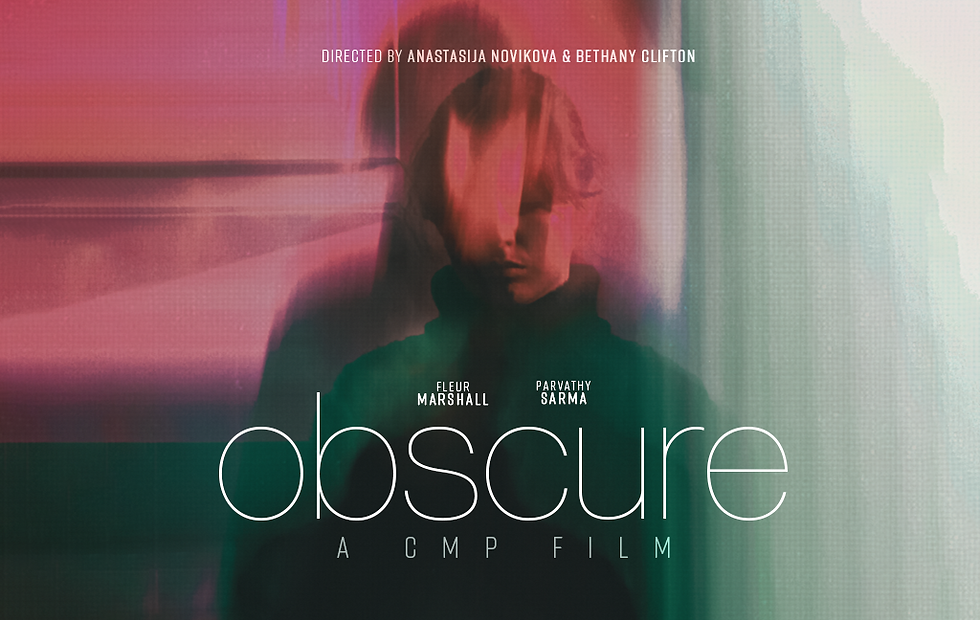Week 8 - Mood-boards
- Carmen-Mihaela Bratosin

- Dec 6, 2021
- 4 min read
In our initial planning, we set out to use three rooms within the apartment - the open plan living room/kitchen, the bathroom and one of the bedrooms. However, after several alterations of the script, the bedroom was completely removed, giving us the opportunity to look into designing the two remaining sets into more detail.
As mentioned in previous blogs, Joe’s character has been adapted to represent the struggles of an aspiring female filmmaker; thus, the main set of the open plan living room/kitchen aimed to reflect those aspects of her life.
The other set, the bathroom, represented her dissociative state of mind resulted from stress as most scenes portrayed in this set involve imaginary depictions of other characters (Joanna, male director) through either sound or quick changes of visuals, and the final set, the bedroom, originally meant to represent the struggle to gain recognition for her work was then replaced by the prop wall featuring a mood-board of script drafts, sketches and ideas Joe has failed to pitch. Similar to the character of Joe, we used mood-boards to help us establish our set design, by looking at existing set designs and how it could be applied to our project.
Aiza began using the Pinterest board I set up during our previous meeting to create more condensed versions of the mood-board - these would then be used in the treatment our directors have started to show the visual concept of each set. I then wrote explanations for each set and our choices of set design and assisted Aiza in condensing the boards.
Mood-boards (as seen in the Treatment and Production Bible):

Joe’s apartment is seen as an integral part of the film as it is through the decorations and the placement of furniture that we learn about Joe as a character and her aspirations. The disordered state of mind Joe enters as a result of coping with failure is reflected and even foreshadowed within the apartment space. Scattered pages of scripts, loose mood-boards, food remnants and general clutter are seen early on in the film to depict Joe’s hobbies. Her struggles of finding a long-term workplace are reflected in use of props such as uniforms from low skilled job employment and letters of rejection from filmmaking agencies.

The mirror prop within the bathroom setting is a vital part of the visual concept as it provides glimpses in multiple scenes where Joe has to look at herself. Throughout the script, the bathroom appears as a place of comfort and calamity - she removes herself from her own birthday party by escaping in the bathroom and, thus, inside her own mind. Later on, once Joe starts attending interviews for aspirational places of work we see Joe going through her morning routine multiple times using the mirror prop. It is with the use of the mirror that we see Joe forcing herself to smile, repeating her lines, and putting makeup on; the recurring pattern illustrates how women in male dominated industries are encouraged to display emotion and portray themselves to the world.

Similar to the original script, the film begins with Joe’s birthday party which we, as an audience, only hear the soundscape of as Joe takes a moment to herself in the bathroom. This scene is pivotal to establishing Joe’s internal struggles as the monologue from the original script is replaced to be narrated by Joe’s neighbour - Joanna, in order to show the perception she has of our protagonist and her importance in Joe’s mind.
Remains of the party are to be seen in the next scene, where the birthday cake, decorations and cards depicting a wrong age are scattered throughout the apartment.

Bedroom Mood-board - Set cut out from the script
Furthermore, as seen in the broader Pinterest board for the film, we have also used sections for each character in order to define their appearance, style and other key elements of their visual presentation that are relevant for our actors and directors.

Name: Joe Age: just turned 25
Aspiring female filmmaker struggling to succeed in a male dominated industry. She is talented, creative, ambitious and hard-working, however, feels like these qualities start floating away as she loses hope to make her ideas visible. She regularly goes through the mood swings and feeling of being an imposter in art of making films. These aspects make her perceive reality in a different way-she often goes into her own mind palace and manipulates real into new imaginary narratives.

Name: Joanna Age: 24
Joe’s neighbour and an acquaintance who knows her quite well. They don’t communicate quite awkwardly in real life, so Joe’s behaviour seems a bit childish and disorganised to her. Joe sees Joanna as a muse and her love interest, however in her imagination they are actually in a relationship.

Age: unspecified
Three characters: Cinematographer, director and assistant director
The film crew is only seen throughout the dream sequence Joe experiences at the film's midpoint. Their roles are, as defined, working on set, going through the script, discussing ideas, shooting and minding their own business. The cinematographer then takes a dominating role within the dream imagery that signifies technology and male dominance in art of filmmaking.




Comments